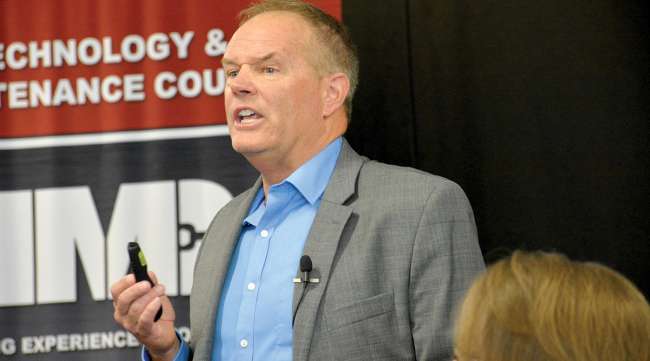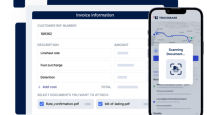Staff Reporter
Experts: Trucking Companies Should Use Data Collected to Improve Margins, Decrease Downtime

[Stay on top of transportation news: Get TTNews in your inbox.]
ARLINGTON, Va. — Trucking companies that effectively mine the data generated by their operations can free up time and capital to invest in other areas of their businesses, experts said at an industry meeting here.
“You guys are already swimming in this stuff — the internet of things and the data,” said Steve Chaffee, director of fleet innovation, research and development for Hitachi Group, during a presentation at the Fleet Data Management & Cybersecurity Conference, hosted June 26 by the Technology & Maintenance Council of American Trucking Associations. “The digital imperative is staring you in the face.”
Carriers who embrace that imperative can wring an 80% average improvement in three-year operating margins by mining data culled from their telematics systems and other technologies, he said — information that can help prevent costly roadside repairs and also help carriers with longer-term planning.
The digital imperative
is staring you in the face.Steve Chaffee, director of fleet innovation, research and development for Hitachi Group, on the need for trucking companies to use data effectively
“Failure prediction is valuable,” Chaffee said. “Remaining useful life is very valuable when you’re looking at the total asset. If you are looking at certain part components, it can be very helpful, too. We’re a little less concerned with [part components] as we are keeping that thing on the road, keeping the drivers driving.”
Chaffee noted that predictive maintenance and artificial intelligence can help fleets better plan for when specific maintenance is needed, as well as make recommendations and estimate the costs of equipment failures. Data can also help ensure a smoother trip to the shop by verifying that a part needed for a repair will be handy.
“What we learned is ... how many minutes can we save per visit?” Chaffee said. “That’s a real metric. If we make the shop trip more predictable ... you can start shaving 15 minutes easily. We’re seeing some real dollars saved right to the bottom line.”
But finding those savings can be a challenge unless a carrier knows how to manage the data, noted Braden Pastalaniec, senior director of sales for Uptake, a Chicago-based artificial intelligence company that focuses on carrier and equipment applications. Artificial intelligence, or A.I., is the computer replication of a brain function, often the process of learning. A benefit of A.I. is its ability to interpret data without human eyes, especially for fleet executives who may feel pilloried by too much data, Pastalaniec said.
“If you just open up the stream of data that is available from connected devices, you are immediately going to be overwhelmed,” he said. “If you just turn on the spigot, you are not going to know what to do with it.”

Pastalaniec
Pastalaniec said Uptake’s A.I. studies correlations between data — such as relationships between oil, coolant and outside temperatures — and issues warnings if it identifies anomalies.
“If we have better information sooner, we can plan our operations and create efficiencies is in multiple areas,” he said.
And that information can improve fleets’ bottom lines, noted Jim Buell, executive vice president of sales and marketing for FleetNet America, a provider of fleet maintenance data services. The company is TMC’s partner in a benchmarking program through which fleets anonymously share data on roadside repairs, which is then input into the program to help participants better manage their equipment.
In his data, Buell found cost of roadside repair jumped 16% in one year, but also noted that those costs could be deterred if predictive data were used. According to his company’s data, the average fleet’s truck has a breakdown every 8,368 miles. However, he noted that five areas on a truck — tires, lighting, brakes, exhaust systems and wheels, rims and hubs — accounted for 63% of all breakdowns during the first quarter of 2019.
Buell said one carrier drilled down into its data to reduce roadside failures by making a concerted effort to protect lighting systems from salt corrosion. In another case, one fleet’s ability to mine repair data enabled its trucks to travel an average of 44,000 miles before a roadside breakdown.
“If one fleet can run 44,000 miles between a breakdown, why can’t other fleets run that, with similar equipment?” Buell asked. “Or at least get close to it?”



